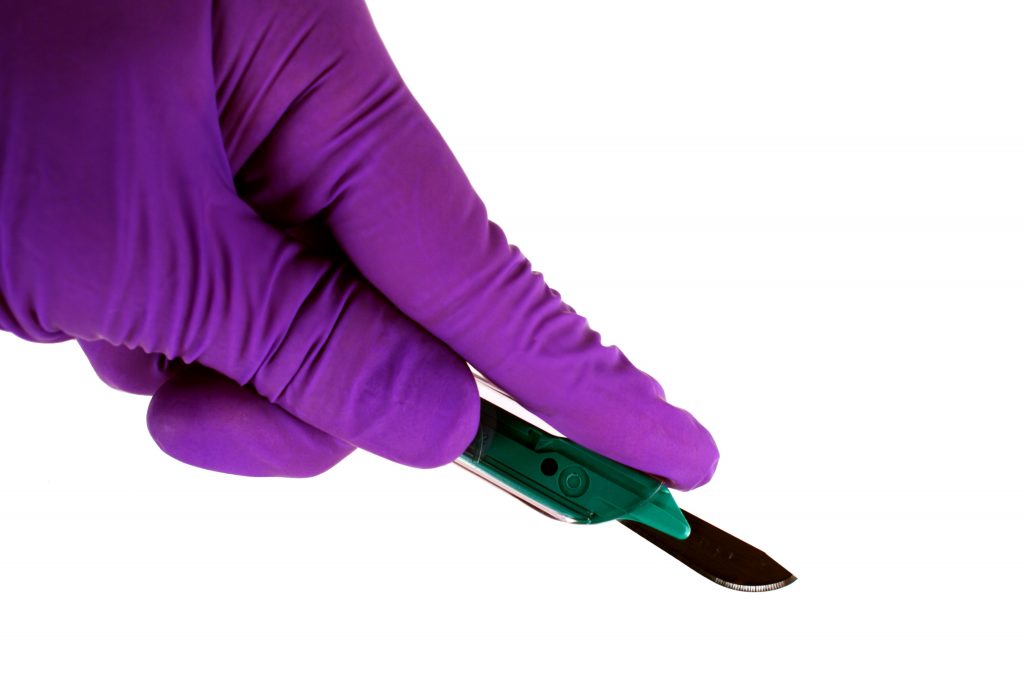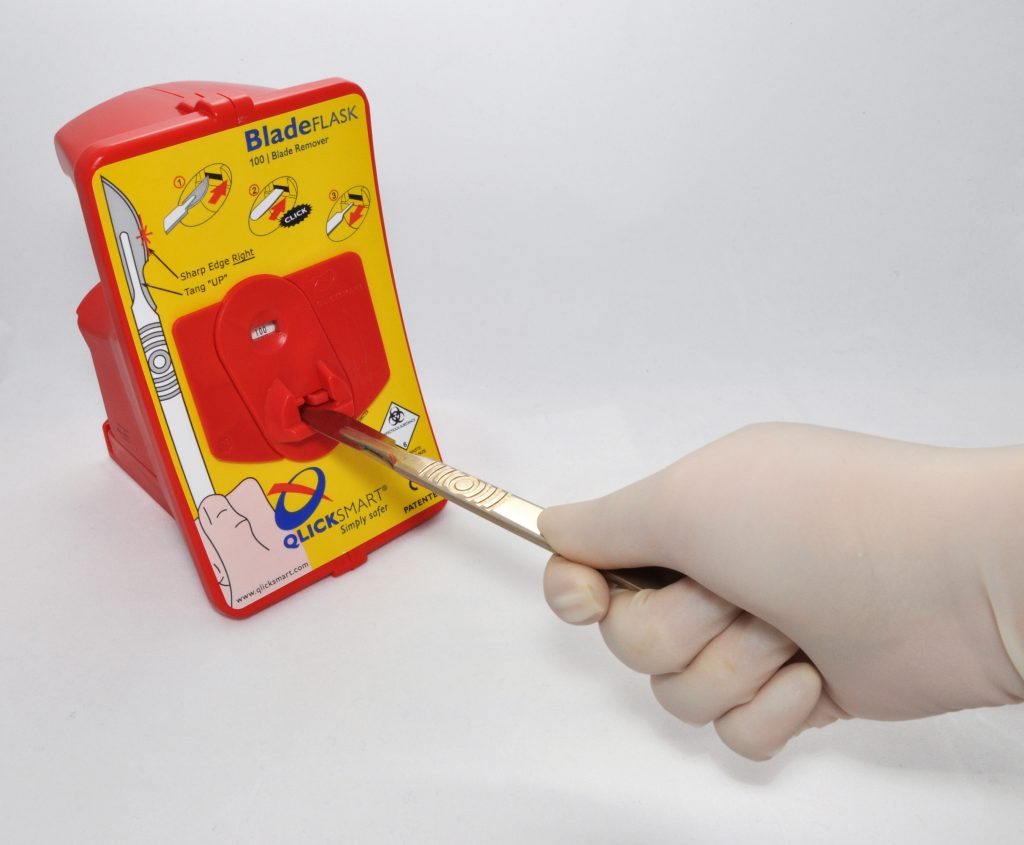Why you should be using passive safety devices
There is a lot to take into consideration when choosing tools that keep patients and staff safe. Devices that have safety features fall under one of two categories; passive safety, or active safety. Here’s a breakdown of what active and passive safety means and just how safe they are.
What is active safety?
An active safety device is a device where the safety feature needs to be manually activated by the user. An example of this is a safety scalpel. There are two main categories of safety scalpels: those where the operator retracts the blade inside the handle (much like a box cutter) and those where a sheath is moved forward or backwards to cover or expose the blade. Both types are active safety devices which require specific activation by the user and may require two-handed use. While some may argue that active safety devices can give users more manual control, these safety-intended adaptations of traditional tools can make them more difficult to use in practice. Surgeons, for example have stated that the built-in safety features on safety scalpels can obstruct their view, and make it difficult to make incisions to certain depths.
Furthermore, if the safety features (eg. the sheath) are not activated properly by the user, they can prove ineffective and even harmful. Evidence from a multicentre study in the US revealed that activation rates of active safety devices were as low as 17%. In this case, approximately 75% of blood and fluid exposures occurred when the safety function was not appropriately activated on the active safety devices.
What is passive safety?
A passive safety device is one where the safety feature is activated automatically. When used, a passive safety device makes processes such as removing a scalpel blade safer for the user because there is no manual activation required. A French multicentre study found that active safety devices were 70 times more likely to be involved in a sharps injury than a passive safety device.
The Qlicksmart BladeFLASK scalpel blade remover was designed as a passive safety device which only requires one hand for operation. By activating the safety feature automatically (in this case, stripping the scalpel blade from the handle), the responsibility is taken out of the users’ hands figuratively and literally. Evidence has shown that when combined with a hands-free passing technique, single-handed scalpel blade removers such as the BladeFLASK are up to 5 times safer than using a safety scalpel.
Safety First!
In an environment where sharps injuries do occur, it is especially important to make safety a top priority. With this in mind, a passive safety devices such as the Qlicksmart BladeFLASK is likely to be easier and safer to use.
References
Hanmore E, Maclaine G, Garin F, et al. Economic benefits of safety-engineered sharp devices in Belgium – a budget impact model. BMC Health Services Research 2013;13(1):489. doi: http://doi.org/10.1016/j.jhin.2011.05.020
Enid K. Eck R, MPH, Cindy Lacy R. Active and passive technologies in sharps safety. Infection Control Resource 2008;3(4):1, 5-7.
Staffandpatientsafety.org. (2009). Scalpel Safety. [online] Available at: http://www.staffandpatientsafety.org/documents/JCAHO200903-ECN-Scalpel-Safety-article.pdf .



